#Queen Maria Sophia of Naples
Photo
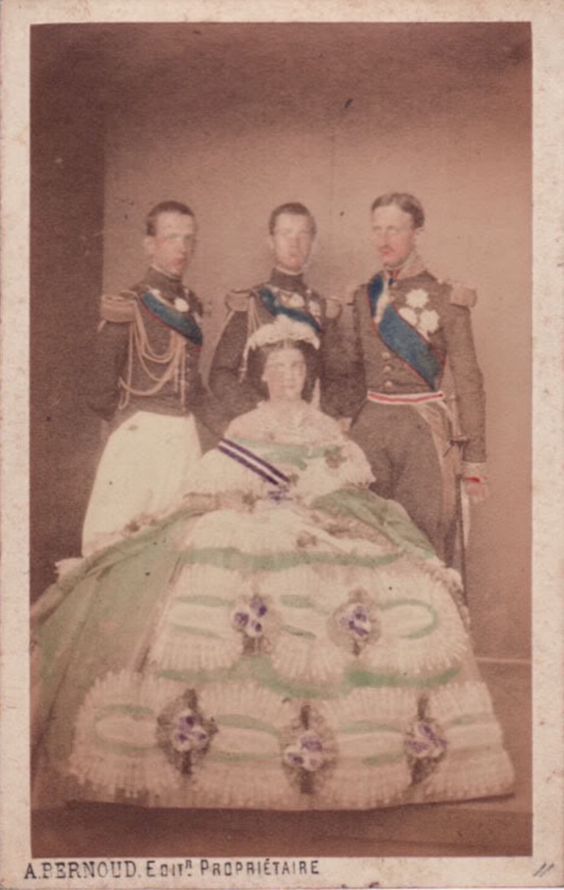
The Queen, who was the sister of the Empress of Austria, the Comtesse de Frani, the unfortunate Duchess of Alençon, and the Princess of Thurn and Taxis, had exchanged the freedom of her Bavarian mountains for the stifling atmosphere od the Court of Naples, where bigotry and despotism ruled, and where Royalty relied at the same time on police and brigands. The young Queen, who was broad-minded and accessible to modern ideas, tried to persuade her husband that he ought to grant the reforms the country claimed. Her influence was counteracted by that of Father Borelli, confessor to King Francis II.
Memories of a Shipwrecked World, Marie Kleinmichael, 1923
17 notes
·
View notes
Text


Lost in contemplation of the beauty of the scene she had not at first noticed the steam-launch which was approaching, but the next moment she was beaming with pleasure. Francis was standing up in the boat in his fine hussar uniform. She knew him at once from his picture, and found him more attractive than she had expected to do.
She stepped forward to the gangway to meet him, and with the most natural womanly grace, held out her hand, saying: "Bounjour François!" He took both her hands in his, kissed her on the brow, and said timidly: "Bonjour Marie!" The Queen embraced the young bride, and presented the Princesses to her. Maria asked feelingly after the King's health, and expressed her regret that he was unable to be there to receive her. She then questioned her new relations about the coast lying before her, about the town they were approaching, about the ships in ther harbour, and about everything she saw from the vessel.
The bridegroom stood almost silent by his stepmother's side, finding only disconnected words to stammer in response. The agitation in which he found himself, the pleasant surprise of discovering Maria to be handsomer and more fascinating than he had dared to imagine, made him more shy and awkward than ever.
(...) The Queen conducted her to her rooms, and Nina Rizzo changed her travelling costume for a bridal robe, which was thrown over the large crinoline which all ladies were obliged to wear at that time, in accordance with the dictates of fashion. A wreath of orange-blossom and a veil of beautiful lace, which she had brought with her from her home, were fastened to her mass of hair — that characteristic of the Wittelsbach sisters. The bridal veil, falling in wide folds about her, reached almost to the ground.
An altar had been erected in a large room of the palace used for festivities. Above the altar and along the walls were hung pictures of the Holy Virgin. A throne had also been constructed, and was covered with velvet and gold embroideries. Beside the throne were arm-chairs for the Princes and Princesses.
The bishops and most of the distinguished company had taken their places. The solemn function was about to begin. But many of those assembled had difficulty in restraining their laughter, and several smiled outright, although they tried all in their power to keep a countenance of decorum. The Crown Prince's second stepbrother, Alphonso, Count of Caserta, though at that time eighteen years of age, was as wild as a schoolboy in the holidays. He had managed to fasten a long train of paper to the uniform of one of the highest of the court functionaries. The courtier was in absolute ignorance of the Prince s schoolboy trick, and the air of importance with which he performed his duties added to the absurdity of the situation. In the end a gentleman succeeded in detaching the train without the victim having noticed it.
The bride and bridegroom entered the apartment, and were conducted to their places before the altar. The bishop gave a forcible address in the flowery Italian language, concluding by calling down the blessing of God on the young couple. The Te Deum was sung, and the orchestra played the national anthem. The newly married couple then went to the King's bed-chamber to receive the paternal blessing. Salvos of artillery announced to the people that the marriage ceremony was at an end.
Tschudi, Clara (1905). Maria Sophia, Queen of Naples: A Continuation of “The Empress Elizabeth” (translation by Ethel Harriet Hearn)
ON THIS DAY, IN 1859, DUCHESS MARIE SOPHIE IN BAVARIA ARRIVED TO NAPLES AND MARRIED PRINCE FRANCESCO, DUKE OF CALABRIA IN PERSON. They'd had a proxy ceremony on January 8. Marie was the sixth child and third daughter of Duke Maximilian in Bavaria and his wife Princess Ludovika of Bavaria. Francesco was the only child of King Ferdinando II of the Two Sicilies and his first wife Princess Maria Cristina of Savoy.
Marie had left for Naples on January 13, but news of King Ferdinando's grave illness caused her to delay her journey and stay in Vienna with her sister the Empress Elisabeth of Austria. She was able to set forth again on the 30, accompanied by Elisabeth, and arrived in Trieste the next day, from where she finally sailed February 1 to Bari.
Ten years after getting married Marie and Francesco had their only child, Princess Maria Cristina of the Two Sicilies, who died aged three months old.
#disfunctional marriage (affectionate)#also every single artist that painted francesco's commitment to completely change his face is impressive#queen marie sophie of the two sicilies#francesco ii of the two sicilies#historian: clara tschudi#queen maria theresa of the two sicilies#prince alfonso count of caserta#maria sophia queen of naples: a continuation of ´the empress elizabeth´ (1905)#on this day in history
5 notes
·
View notes
Text

Portrait of Queen Maria Sophia of Naples (detail), attributed to Francis Xavier Winterhalter, c. 1860
779 notes
·
View notes
Text
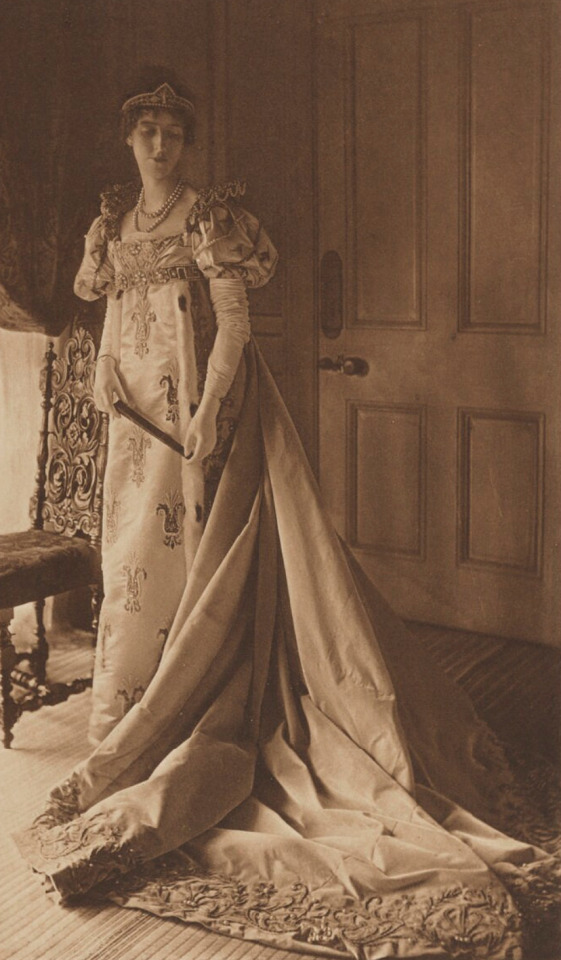
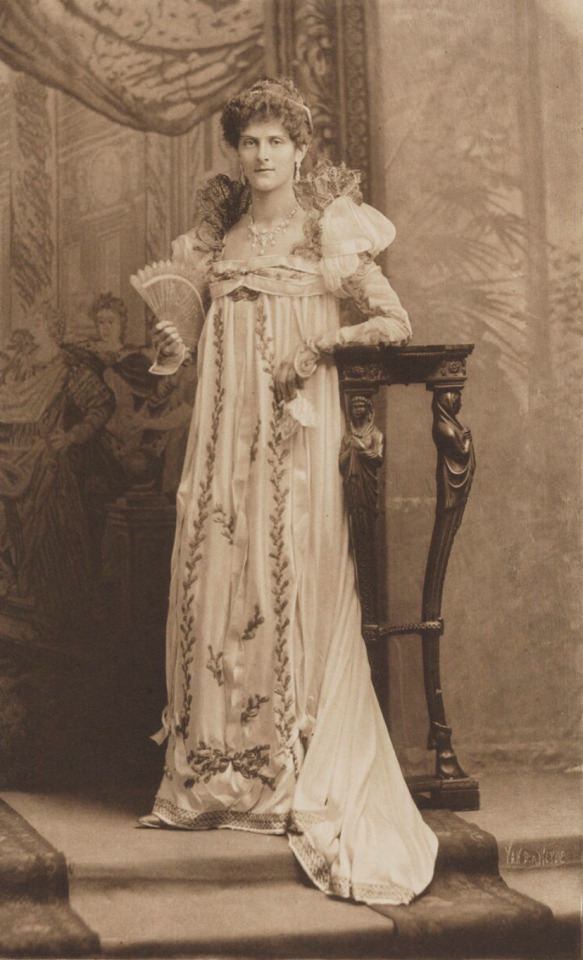
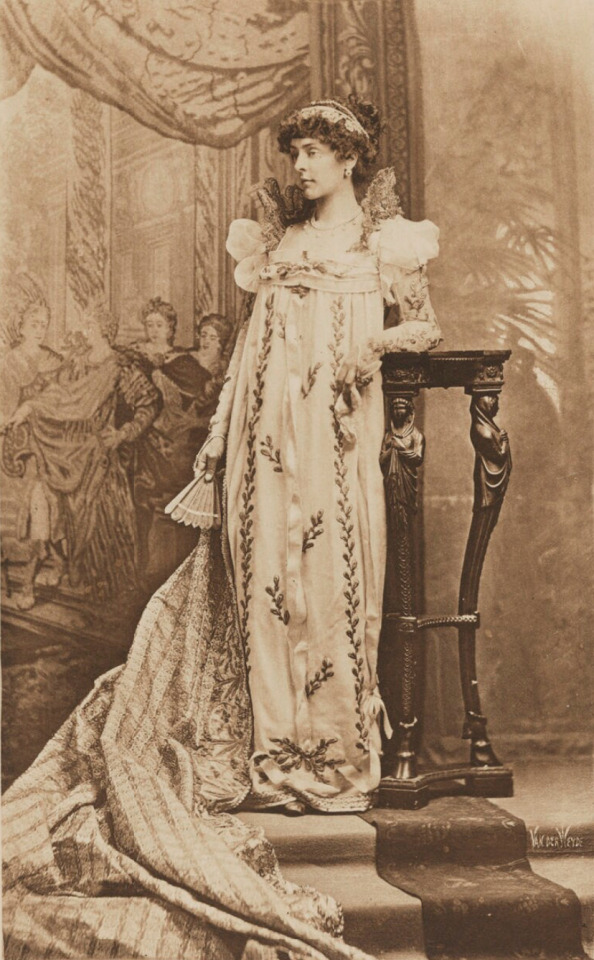

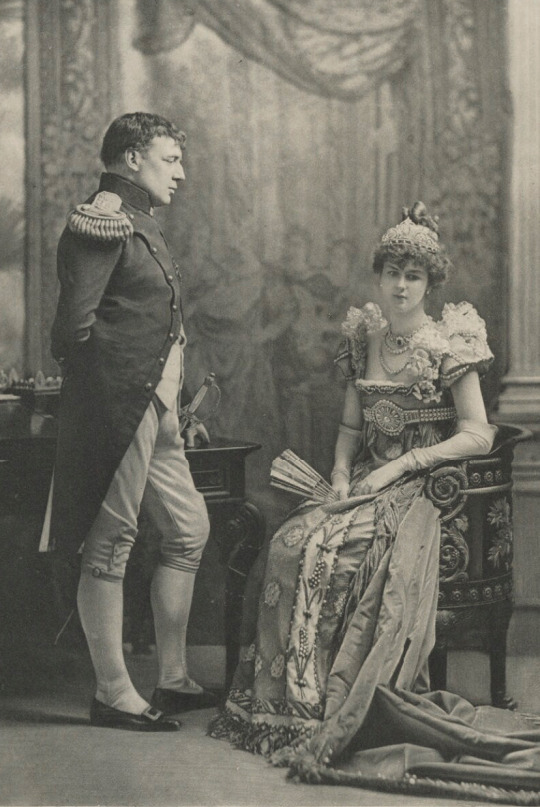

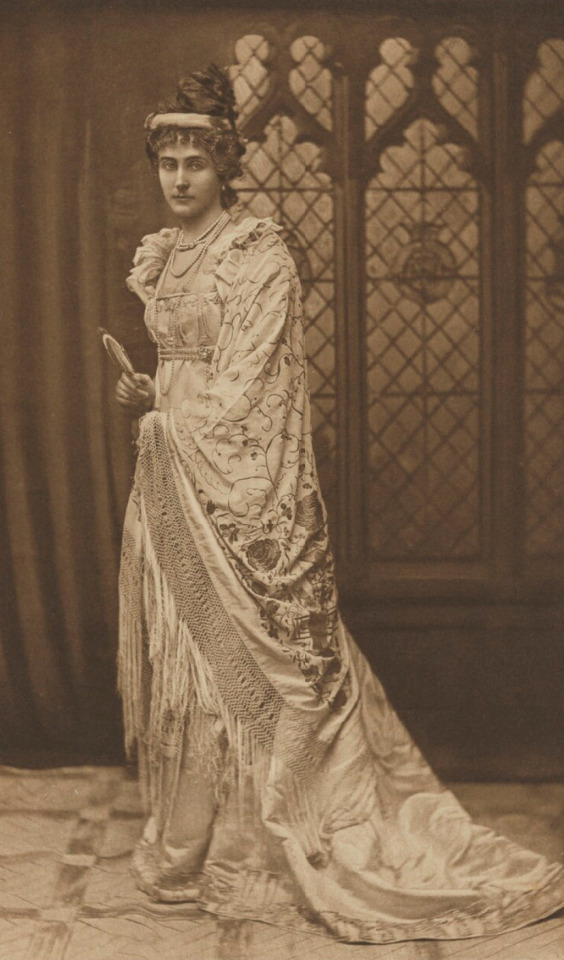

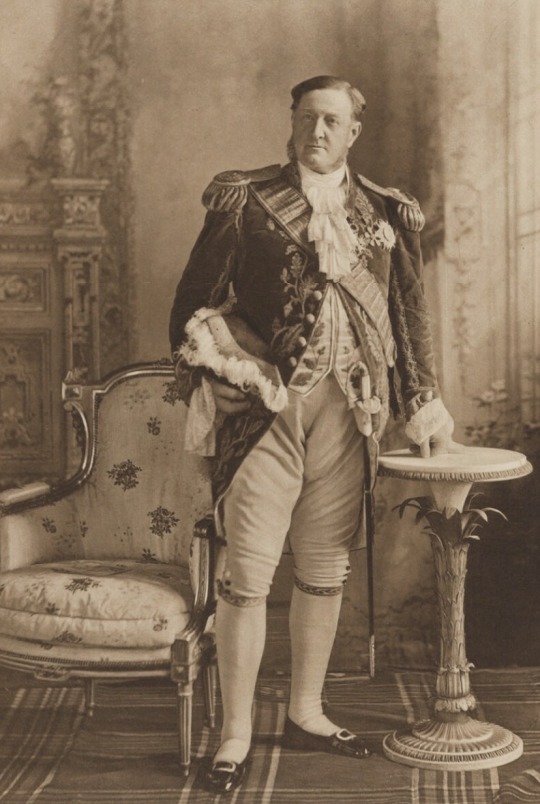

Costumes of Napoleonic figures at the Devonshire House Ball of 1897
1. Aileen May (née Wyndham-Quin), Countess of Meath as Hortense de Beauharnais, Queen of Holland
2. Princess of Löwenstein-Wertheim-Rosenberg (née Countess Josephine Kinsky) as Princess Pauline Bonaparte Borghese
3. Thérèse (née Kinsky), Countess Clary-Aldringen as Caroline Bonaparte Murat, Queen of Naples
4. Florence Anne (née Cole), Lady Delamere as Hortense de Beauharnais
5. Sir Charles Edward Cradock-Hartopp, 5th Bt as Napoleon I; Millicent Florence Eleanor (née Wilson), Lady Cradock-Hartopp (later Countess Cowley and Mrs Duberly) as the Empress Josephine
6. Lord Arthur Vincent Hay; William George Montagu Hay, 11th Marquess of Tweeddale; Candida Louise, Marchioness of Tweeddale as the Empress Josephine
7. Kathleen (née Douglas-Pennant), Viscountess Falmouth as Madame Recamier
8. Maria Henrietta Sophia Chaine (née Phipps) as Madame Sans Gêne
9. Henry Chaplin, 1st Viscount Chaplin as Marshal Lefevre
10. Catherine Dorothea Mary Grosvenor (née Simeon) as Marie Louise
#Devonshire House Ball of 1897#Devonshire Ball of 1897#ball#1890s#1897#napoleonic era#napoleonic#napoleon bonaparte#first french empire#french empire#Hortense de Beauharnais#pauline bonaparte#Caroline Bonaparte#josephine bonaparte#Marie Louise#Madame Recamier#Marshal Lefevre#costumes#costume#fashion history#historical fashion#Napoleon#Madame Sans Gêne#19th century#france#history#Devonshire#England#empire#empire style
91 notes
·
View notes
Text

Francis II and Marie Sophie, last King and Queen of The Two Sicilies. A carte de visite photograph by Alphonse Bernoud, Naples 1959. From my own collection.
Queen Marie Sophie of The Two Sicilies in 1924.
I found this interview with Marie Sophie online, it's in Italian so I google translated it. Far from perfect!! But it gives some interesting info on our Queen one year before her death.
Posted by Giuseppe Grifeo on 19 February 2022, grifoneartigliopenna.com.
Interview with Her Majesty Queen Maria Sofia
Published in Corriere della Sera in November 1924.
by Giovanni Ansaldo.
Maria Sophia of Bavaria, Queen of Naples, widow of His Majesty King Francis II of Bourbon. Not only does she still live, but she reigns. Duchess of Castro for the vulgar of hotel maîtres and bellboys, empress of the soul for me.
I love the beauty and dignity of tragedy in her.
There will always be kings, they will triumph over theories and revolutions, because tragedy is necessary, and they alone are its characters.
Poor men need living beings, freed by birth from the miseries of sentimental promiscuity and from certain conventions towards equality, from certain leveling of pain, from certain ménagements of respectability.
A few days ago, Queen Maria Sophia was rummaging through some old crates, which had not been opened for years.
She drew out two poor water-colours, two views of Vesuvius, sweetly veiled by a languor of exile, which had trembled in the hand of the amateur. Her trusty Barcelona, who was next to her, found them beautiful.
"Do you think so?" replied the queen, squinting her eyes and looking at the two watercolors in perspective. "Do you think so? My king painted them."
And she laughed.
The old queen of eighty-three years still laughs, softly or with a sharp convulsion, and a wave of blood still rises youthfully from her heart to her temples, to the root of her white hair; she still laughs today as in his father's house in Possenhofen, in the palace of Naples, in the casemates of Gaeta, at the time of her eighteenth birthday.
The great disdainful are inclined to laughter: it is, in them, an attitude of defense against life. Unlike her sister Elisabeth of Austria, Maria Sophia sought happiness.
She says it: "We, Duke Max's five daughters, used to call us die Wittelsbacher Schwestern, the Wittelsbach sisters, when we were young. We wore all five, black braids, drawn round just above the ears and on the forehead, in the manner of the peasant women of Oberbayern.
"Then we all took flight: Elisabeth became Empress of Austria, Helena became Princess of Thurn und Taxis, Matilda married Louis, Count of Trani, Charlotte the Duke of Alençon: but of all five, I was the one most disposed by nature to enjoy life."
Her design was therefore a slow and laborious conquest, her indifference being a crown far more glorious than that Norman monarchy.
The anxieties of recent years, the vicissitudes of a barely well-to-do old age, have not deprived her of her laughter, which even today veils her purple face, the purple of her intimate and victorious kingship, which the adventures of the world and of men cannot offend. Maria Sophia lives in Munich. She was the guest of her nephew, the son of Duke Karl Theodore.
The old palace built by Duke Max on Ludwigstrasse houses the headquarters of Deutsche Bank in the left wing; in the right wing, the Queen of Naples.
The young Wittelsbach princes, the new generations, have built themselves other mansions, in Bad Kreut, in Berchtesgaden, in Tegernsee: they bring with them valid servants: they have left the old queen two servants who wore with extreme decorum the livery of the Wittelsbachs, white and blue, and whom they enter with dignity into the antechamber naked, with a few yellow satin armchairs, but without, God willing, all the bric a brac of the private apartments of the poor and banal kings with kingdoms.
Two old retired servants, two maids, the secretary—this is Maria Sophia's court. The secretary is a man from Catania, Mr. Barcelona, who has been in the service of the queen for more than twenty years. And, he says, with the naïve and honest devotion of an employee.
The Count de La Tour, Baron Carbonelli, the Count of San Martino, the last gentlemen who surrounded the old Maria Sophia before the war, all dead.
"I'm the only one who replaces them," says Mr. Barcelona with infinite discretion.
"Her Majesty's estate was all invested in Austrian funds. You understand the consequences. The queen also owned a beautiful villa on the boulevard Maillot in Paris. It was there that, indeed, the war surprised us. Oh, all the adventures to send the German servants back to Germany.. The queen has Italian citizenship, she is Italian. The French Public Security was then very kind, for the passport. I said, "But you understand, gentlemen, you don't want an old queen to come to the commissariat in person!" They understood, and sent a delegate. Then came the moratorium of interests: we were already here in Munich. But the Wittelsbachs still helped the queen: the prince regent was on the throne. Leopold, the same one who led her to the altar, by proxy of Franceschiello. Many Italians, many, visited the queen in prisoner of war camps. The queen speaks fluent Italian, just a few French terms, but rarely: and they were surprised". And she explained it like this: "I am a lady, who knows Naples well". Or: "I'm a lady, who learned to speak Italian when I was young." Then she said: "Poor people! They are astonished to find me so much like them, for I ask if they have had their full ration of broth!" She gave all his Italian books to the prisoner of war camps.
At the time of the "republic of councils", the queen was accommodated at the Kaiserhof on the Stachus. The Spartacists defended themselves from the barricades erected right in front of the hotel, on Karlsplatz. The owner said: "But Your Majesty, I decline all responsibility." The queen laughed, and said: "My dear, absolutely not. I will not go down to the cellar. I want to see if at least the revolutionaries of today shoot better than those of my time." And she always watched from her apartment all the phases of the struggle.
General Epp, who commanded the government troops, liked her very much because she rode well. Then we left for Paris, boulevard Maillot, where we spent two years: from October '20 to October '22 (it is presumed that they are still the words and the story of the trusty Mr. Barcelona) Now, the beautiful house on Boulevard Maillot is sold. The last three Italian servants took their leave. This winter the queen would also have liked to spend the winter in Paris: we wrote to some good hotels, not the first ones: but what prices! One hundred francs a day. The queen, you will understand, has to fix at least three or four chambers. For this year you will have to give it up. As with newspapers.
In the past, we received about twenty newspapers, quite a few, even Italian newspapers: but how do you do it now? The queen still gets a few Italian newspapers, but so you know... So, when there's something interesting...
The secretary does not want to say his own words: "second-hand".
He's right. Kings cannot accept anything second-hand: neither the throne nor the newspaper.
I reflect: how beautiful and noble it would be if the greatest Italian newspapers sent a copy as a tribute to an old lady of eighty-two, who was... But yes. Not even to think about it. We would be accused of latent Bourbonism.
"That's the way it is with the mail. What a lot of mail you used to do, madam! The queen did a lot of charity, she paid small pensions. She wants to pay one even now, to old Giovanni Tagliaferri, of Caserta, who was with her at Gaeta: he is the one who still remembers more things than when the queen was young, and drove six horses, with a firm hand, through the avenues of Capodimonte. But also the mail, little by little... It was very sad when she had to suspend the subsidy to the hospice of small Italian glassmakers, at the Plaine Saint-Denis, near Paris."
"It was Sister Maria d'Ajutolo who is now dead too, who had taken her to see what the misery of those people was. Sister Marie d'Ajutolo was an energetic woman, who when she spoke of the horrors of the Plaine Saint-Denis, or of some other affair of the kind, would fix her eyes in the Queen's face, and say, 'Shame on you, Your Majesty.'"
And the queen replied firmly with conviction: "Yes, there is something to be ashamed of, Sister Maria."
When I told her that the subsidy could no longer be spent, the queen was sitting at her work-table on the other side, and repeated two or three times, looking into space, "Shame on you, Your Majesty." Then she added, "No one ever spoke to me so well as Sister Maria."
In fact, she had a high esteem for them.
Now, the queen writes to fewer people. In Italy she still has some friends from distant times: such as the Duchess Della Regina, who is also Countess of Macchia, of Naples.
For the 4th of October, which is the Queen's birthday, and for Marie's nameday, the Duchess always sends to ask what the Queen would like best. And you know, what do I always receive? A box of macaroni, with a little cheese and preserve, so much so that you can make some dry pasta.
And the Duchess always sends everything on time. The duchess is old too, she met the queen in Caserta, she never saw her again, from those days. But she still does the packing, I know the handwriting. You have to write on the address: "Liebesgaben".
Then at the border they don't open the parcel, the German customs don't open the parcels of gifts. "Liebesgaben", "gift of love". You are a great soul, old lady. You write with trembling hands the foreign word, the mysterious word, the word that must open distant frontiers to homage to the queen of your youth. "Liebesgaben", "gift of love...".
"The Queen, when she receives the Duchess's parcels, with Liebesgaben written on them, is very happy. She sends for an old Neapolitan, here from Munich (in Paris, there were the Tagliaferri, uncle and nephew) and has delicious dry pasta made, which she lets as many people as possible taste. The last time, she invited the Papal Nuncio, Monsignor Pacelli, to lunch: but such a confidential lunch, it is understandable: the Nuncio is very intelligent and knows the queen's condition. After all, few visits. the Kronprinz Rupprecht, who comes to be the Queen's nephew-in-law, when he comes to Munich from Berchtesgaden is always engaged in official ceremonies of military leagues, or whatever: he pops here to the palace, but only a few minutes."
"The Queen also had, some time ago, the visit of an Italian princess, who has now entered our House: Princess Bona. She comes to be her great-granddaughter by purchase, because Prince Conrad her husband is the son of a daughter of the Empress Elizabeth."
Mr. Barcelona orients himself in the Wittelsbachian-Habsburg kinship with the safety of a bat in a cave. And then, a few other friends. Every evening at five o'clock, the Queen's sister, the Duchess of Trani, comes. Matilda who lives at the Vierjahreszeiten hotel on Maximilianstrasse. To have tea. Then I do a little reading of the newspapers, because the Duchess of Trani, though less old than the Queen, cannot read easily, without glasses, like the Queen."
"The Duchess of Trani is eighty years old. The queen says that their speeches are as gloomy as that line by Schiller in the ballad of Rudolf of Habsburg: "Als dächt'er vergangener Zeiten" (as if thinking of times gone by) but she says it without regret. Then I always accompany the Duchess of Trani back to the hotel, which is quite far away, and because of the darkness some misfortune could happen to her."
"Rudolf of Habsburg, when past times seize him, and make him weep, sits at the palatine banquet, in the midst of his court, and can hide his tears "in the mantle of purple folds." Maria Sophia has only the purple of her face, which protects her from the ravages of the vulgar, from curiosity and compassion, better than the imperial mantle "des Mantels purpurnen Falten".
Standing next to her work table, straight as the trunk of a young pine tree, the queen receives. Beneath the fringe of her white hair, and the great and perfect arch of her eyebrows, the eyes look at the newcomer, and at the same time they look into the distance: She feels that she is on the edge of that proud life; guests, episode. The thin mouth is painful, yes, and for being good and benevolent, but it cannot smile with the easy and banal encouragement of charmeurs.
The queen who resists death so tenaciously has something in her face of those children, for whom one fears that they will soon die: this fear, this reluctance before life is the same on her face today, as in the portrait of her seventeen-year-old Piloty painted, before she was married.
Because of this anxious and disdainful face of hers, Maria Sophia is saved from obscene old age, she is the contemporary of all the generations that have passed: she is the ageless woman of the ancient Hellenic poem, who, struck by the misfortune of her house, yet not despairing of the justice of the gods, happy and proud of her own beauty that cannot be taken away from poor men, Praise the designs of fate.
The tone with which it asks the visitor for the name, the majors, the homeland, is frankly Homeric. The queen believes in the goodness of blood and the importance of at least clean ancestry. She also asks for years, and says her own, without any senile vainness. "I'm eighty-three years old. One more than Mr Giolitti. I'm very old."
The queen is silent. I furiously search my brain for the questions to ask her, the issues, the arguments. Nothing. That last sentence of his makes me feel like a portcullis, suddenly lowered on a window where I wanted to nibble with my curiosity. "I am very old": implied: "Let your words be counted".
I raise my head: the queen is motionless. I can't see or think of anything other than the two objects on the table: a white tricot work, and a newspaper.
I end up asking the Queen what newspapers she reads.
"I'll tell you. I myself read Les Journal des Débats and Le Figaro every day. My foreign policy is somewhat directed by Mr. Gauvain, whom I consider to be the first political columnist in Europe, the most informed, independent and systematic. I read Le Figaro for the mundane part. It is the only newspaper in the world that gives a good account of the marriages, the deaths, the vacations of my relatives and my relationships, and of good society in general: a much more important thing than you think. Then the Figaro is the only one I trust for literary reviews. I buy the books he says well about, the others I certainly neglect."
"And what about German newspapers?"
"So, the Müncheners, for what's going on in the city. But Munich is sad, you know. These people of Munich have lost their minds." The queen lowers her voice, and repeats several times: "lost my head."
"Mr. von Kahn is a man very devoted to the monarchy: but he has no head, no, no."
The queen still nods nods, with her nod, with indulgence, with pity. "I know him as godly, but headless men are."
When the Queen learns that I have also visited the Ruhr, she asks me if it is true that French troops are committing so many atrocities. I answer what I know.
"But I always thought so! It can't be that the French deliberately do what these newspapers say," says the Queen, leafing through an issue of Münchener. "I am glad that you give me moderate and unbiased information. This story of French atrocities in the Ruhr is like that of German atrocities in Belgium. All the same, all so the same, sir! What about "black shame"? There, too, it must have been exaggerated."
A pause, full of poor humanity. The queen narrows her eyes as if not to see how deceitful and filthy men are. "Mon cher monsieur, le monde c'est fou. There is no way to heal it. Each generation repeats the mistakes of previous generations, taking them for sensational novelties."
The queen is very well informed about Italian affairs. Of the reigning House, above all: it asks hermetic, sealed questions, of which only an initiate to court life could grasp the hidden meaning.
He is pleased that Prince Umberto is a young man: "It is a great fortune for a king to be handsome and handsome: if not, he ends up staying... to remain, as the French say, aigri [soured]. Queen Elisabeth of Belgium (Maria José's mother) is my niece: she is a daughter of Duke Charles Theodore. And also my favorite, because it was the liveliest, the most daring, the one that most resembled us as a child, the Wittelsbach sisters, when we were also children, in my father's house, in Possenhofen."
A great esteem for Empress Zita of Habsburg. "You see how fine it is: she was the only royal character who did not write her memoirs. The American publishers would have paid her for them too. But a queen writing her memoirs... The Empress understood that."
"The memoirs about me, you say? Oh, how many I began to read! But novels, all novels that I threw away in annoyance...". No Bavarian eagle. "I was a healthy, cheerful girl. But let's get back to Empress Zita. He has two misfortunes: the name, which is ugly, and that plane trip to Hungary: those adventures... But his son will return to the throne."
Arco, Deauville, Tegernsee, the house of the Orléans in Twickenhan, the villa of Neuilly sur Seine: against the backdrop of coffins of exiled kings, the wedding of young princes, the solitary rides of her, the re-enactor.
"Tell me. I saw a photograph in the Illustration in which some nuns greet the King of Italy and Mussolini with their arms outstretched in the Roman style. Is this accurate? Or is it a trick?".
"I think that's right, Your Majesty."
"Is it true that the Honorable Mussolini tries to have excellent relations with the Pope?"
"I think that's true."
"But it's natural, it's natural..."
I don't insist. I am afraid of the memories of her youth and her years of reign...
"You see, I'm poor. And I live here by permission of one of my nephews; for otherwise I would have to live in a suburb of Schwibing or Sendling. I need Monsieur Barcelona out of devotion, certainly not for the salary I can pay him. I don't even have the means to subscribe to some Italian magazine and to buy the latest news from Treves, as I had always liked to do. The Savoys were not chic with us Bourbons."
"That Don Giovanni Rossi, who was an employee of our Royal House, and who had custody of the borderò [payment slip] of four million ducats, my husband's very private property, went at once to present it to Garibaldi, as soon as he entered Naples, to make himself credited, does not surprise me; That Garibaldi immediately confiscated it, together with the borders of the other Bourbon princes, does not surprise me either; Revolutionaries have always done so with fallen kings."
"But that the Savoys, after they had annexed the kingdom of Naples, did not feel the need to show a little respect to the Bourbons, who had been very legitimate kings, like them, this is what still amazes me today, after so many years. Victor Emmanuel also knew that those four million ducats came from the dowry of Francis II's mother, they came from the inheritance of Maria Cristina of Savoy, they were the result of the sale of the allodial assets of the first branch of the Savoy, in Piedmont, and of Palazzo Salviati, in Rome."
"And he knew well that the villa of Caposele, in Mola, had nothing to do with the goods of the crown, with the royal palaces of Portici and Capodimonte for example; but it had been the very personal property of King Ferdinand and left by him to King Francis, my husband, in his will, in his will, as a free property."
"But he didn't make any distinction either, like Garibaldi. He was a king who behaved towards us like a revolutionary, and that is not good. The French republic was much more ladylike with the Orleans than the kingdom of Italy was with us... And now you tell me that the children of the King of Italy are healthy and beautiful and that they enjoy life. I am happy about them and I wish them well. But the way they treated us is a bad omen. God forbid that one day they too will not have to defend their personal patrimony from exile..."
But the queen thinks of it, gently. She speaks of her Italian servants, the last three she had: she knows precisely their names, what they do, where they are. "They were three southerners who remained devoted to me beyond any personal convenience, until it was I who sent them away, because... They were young, they had come to my service on the recommendation of some old friend, they had to start a family, it was no longer possible for them to waste their time around an old lady."
"You can make a lot of railways, a lot of roads, a lot of schools in those countries: men don't change, you know. They will always remain attached out of personal devotion to the master who will be able to convince them: the best soldiers in the whole peninsula, together with the Alpine mountaineers. I had Gaetano. Gaetano Restivo, a Sicilian from Ficarazzo, in the province of Palermo: now he is over there in his village, he sent me a box of oranges some time ago. The last tribute I get..."
"Then Luigi Tagliaferri, from Caserta, nephew of another Tagliaferri, who was with me in Gaeta. Then Gaetano Marsala, from Pescocostanzo in Abruzzo, who is now a shoemaker in Paris. This Marsala is a simple soul, and he always spoke to me about the Angevin crown that is preserved in the collegiate church of his town. He seemed to have tales when he told of the Angevin crown, which, as I understood, must have been in some sacristy of the Church, and Marsala as a child, must have admired it for a long time, when he was preparing to serve mass. For him, there was truly a lost kingdom around the crown of Pescocostanzo, full of all splendors... much more so than for me. A Sicilian, one from Terra di Lavoro, an Abruzzese: all the provinces of the Kingdom were right around me."
The voice lowers, wearily, falls. At the point of dying, I feel that the queen bids me farewell, leaves me again on the sidelines of her rich life, in which I deluded myself, in some accent, that I could look with clear eyes. She didn't let me glimpse anything of this life of her: only glimpses, perspectives on her thought: judgments, if you will: but of the deep life, nothing. In her tragedy, there were never confidants, and monologues were abolished.
When I am at the threshold, the queen understands my foolish disillusionment, and has an ironic pity for it. High in the middle of the room, she beckons me. Perhaps, now, the real one appears to me for a moment, the barbarous Maria Sophia of Wittelsbach, made to be a horse driver, the companion of conquerors, the mother of kings? But the usual bewildered voice murmurs: "You are young, sir: you will still see old queens, so many things, so many things..."
As I attempted my first courtly bow, Maria Sophia still nodded, sadly, to the adventures of the world; that she will never see again. But perhaps she was watching. also my plebeian clumsiness in my deference to Majesty, and the obstacle in which I was to leave the room, without turning my back, as I have read in the books that are practiced with kings: and she lamented these wretched times, when bowing before queens is not even taught.
#royalty#mariesophieofnaples#queenmariesophieofnaples#reginamariasofiaborbone#Casarealdiborbone#empress elisabeth of austria#sisi#mariasofiaborbone#history#royal history#mariesophieofthetwosicilies#italy#sicily#naples#kingdomofnaples#kaiserinelisabeth#sissi
5 notes
·
View notes
Photo

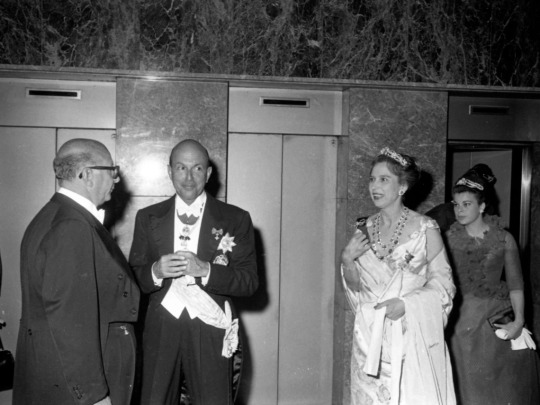


Guests, including Princess Maria Gabriella of Savoy, the Prince of Naples, King Umberto II and Queen Marie José of Italy, Infanta María Cristina and Infanta Beatriz of Spain, the Duke and Duchess of Calabria and Prince Rainier III and Princess Grace of Monaco, depart the Hotel Grande Bretagne to attend the first ball at the Royal Palace of Athens, during the celebrations of the wedding of the Prince of Asturias and Princess Sophia of Greece, 1962.
23 notes
·
View notes
Text
So over the course of 2016 I decided to try to make a list of all the good female characters I enjoyed in media I consumed throughout the year. Some are recurring from earlier years (mostly in the case of TV shows), some were first met in 2016. Personal Special Faves bolded.
Csethiro Ceredin (The Goblin Emperor)
Kiru Athmaza (The Goblin Emperor)
Susan Cooper (Spy)
Nancy B. Artingstall (Spy)
Rayna Boyanov (Spy)
Elaine Crocker (Spy)
Joy Newsome (Room)
Eilis Lacey (Brooklyn)
Elizabeth Bennet (Pride and Prejudice and Zombies)
Judy Hopps (Zootopia)
Clarke Griffin (The 100)
Raven Reyes (The 100)
Abigail Griffin (The 100)
Lexa kom Trikru (The 100)
Octavia Blake (The 100)
Indra kom Trikru (The 100)
Luna kom Floukru (The 100)
Elise Wassermann (The Tunnel; The Tunnel: Sabotage)
Laura Roebuck (The Tunnel; The Tunnel: Sabotage)
Eryka Klein (The Tunnel: Sabotage)
Louise Renard (The Tunnel: Sabotage)
Katherine Powell (Eye in the Sky)
Elizabeth Jennings (The Americans)
Nina Sergeevna Krilova (The Americans)
Tatiana Evgenyevna Ruslanova (The Americans)
Martha Hanson (The Americans)
Claudia (The Americans)
Paige Jennings (The Americans)
Sarah Manning (Orphan Black)
Siobhan Sadler (Orphan Black)
Rachel Duncan (Orphan Black)
Susan Duncan (Orphan Black)
Cosima Niehaus (Orphan Black)
Delphine Cormier (Orphan Black)
Rosalee (Underground)
Elizabeth Hawkes (Underground)
Boo (Underground)
Ernestine (Underground)
Pearly Mae (Underground)
Susan Vernon (Love and Friendship)
Alicia Johnson (Love and Friendship)
Hope van Dyne (Ant-Man)
Natasha Romanoff (Captain America: Civil War)
Wanda Maximoff (Captain America: Civil War)
Helena Justina (Marcus Didius Falco novels)
Jean Grey (X-Men: Apocalypse)
Ororo Munroe (X-Men: Apocalypse)
Holly March (The Nice Guys)
Piper Chapman (Orange Is the New Black)
Galina Reznikov (Orange Is the New Black)
Suzanne Warren (Orange Is the New Black)
Taystee Jefferson (Orange Is the New Black)
Poussey Washington (Orange Is the New Black)
Dayanara Diaz (Orange Is the New Black)
Gloria Mendoza (Orange Is the New Black)
Sophia Burset (Orange Is the New Black)
Crystal Burset (Orange Is the New Black)
Tiffany Doggett (Orange Is the New Black)
Carrie Black (Orange Is the New Black)
Alex Vause (Orange Is the New Black)
Cindy Hayes (Orange Is the New Black)
Nicky Nichols (Orange Is the New Black)
Janae Watson (Orange Is the New Black)
Maria Ruiz (Orange Is the New Black)
Brook Soso (Orange Is the New Black)
Jane Ingalls (Orange Is the New Black)
Judy King (Orange Is the New Black)
Lolly Whitehill (Orange Is the New Black)
Jane Porter (The Legend of Tarzan)
Erin Gilbert (Ghostbusters)
Abby Yates (Ghostbusters)
Jillian Holtzmann (Ghostbusters)
Patty Tolan (Ghostbusters)
Jed Marshall (The Night Manager)
Jaylah (Star Trek Beyond)
Nyota Uhura (Star Trek Beyond)
Commodore Paris (Star Trek Beyond)
Elsa Fennan (Call for the Dead)
Nancy Wheeler (Stranger Things)
Barbara Holland (Stranger Things)
Eleven (Stranger Things)
Joyce Byers (Stranger Things)
Ailsa Brimley (A Murder of Quality)
Liz Gold (The Spy Who Came in from the Cold)
Bridget Jones (Bridget Jones’s Baby)
Miranda (Bridget Jones’s Baby)
Dr. Rawling (Bridget Jones’s Baby)
Darlene Alderson (Mr. Robot)
Angela Moss (Mr. Robot)
Dominique DiPierro (Mr. Robot)
Joanna Wellick (Mr. Robot)
Krista Gordon (Mr. Robot)
Shama “Trenton” Biswas (Mr. Robot)
Whiterose (Mr. Robot)
Shayla Nico (Mr. Robot)
Phiona Mutesi (Queen of Katwe)
Nakku Harriet (Queen of Katwe)
Misty Knight (Luke Cage)
Claire Temple (Daredevil; Luke Cage)
Mariah Dillard (Luke Cage)
Deborah Lipstadt (Denial)
Hong Thi Pham (Dragonfish)
Tuyet Phan (Dragonfish)
Mai Thi Pham (Dragonfish)
Karen Page (Daredevil)
Madame Gao (Daredevil)
Vanessa Marianna (Daredevil)
Doris Urich (Daredevil)
Elektra Natchios (Daredevil)
Elena Greco (Elena Ferrante’s Neapolitan novels)
Raffaella Cerullo (Elena Ferrante’s Neapolitan novels)
Joan Watson (Elementary)
Christine Palmer (Doctor Strange)
the Ancient One (Doctor Strange)
Nam Sookhee (The Handmaiden)
Izumi Hideko (The Handmaiden)
Elizabeth II (The Crown)
Princess Margaret (The Crown)
Teresa (Moonlight)
Paula (Moonlight)
Louise Banks (Arrival)
Porpentina Goldstein (Fantastic Beasts and Where to Find Them)
Queenie Goldstein (Fantastic Beasts and Where to Find Them)
Alessandra Cecchi (The Birth of Venus)
Moana (Moana)
Keiko Kimura (Allegiance)
Jyn Erso (Rogue One)
Mon Mothma (Rogue One)
Lucrezia Borgia (Blood and Beauty)
Vannozza dei Cattanei (Blood and Beauty)
Giulia Farnese (Blood and Beauty)
Rose Maxson (Fences)
Sun Bak (Sense8)
Nomi Marks (Sense8)
Kala Dandekar (Sense8)
Riley Blue (Sense8)
Amanita Caplan (Sense8)
Daniela Velasquez (Sense8)
My top 5 overall were probably roughly
Elizabeth Jennings
Stoic but with a beating heart, vicious, competent as shit, loving in her own manner, deeply gray and amoral, Complicated “Emotionless” Bitch™️ in a way women on TV aren’t often allowed. And hot as shit.
Lena Greco and Lila Cerullo
Let me tell you, if you want some complicated fucking female friendships (slash borderline more if you squint), these two, from Elena Ferrante’s Neapolitan quartet, are Good Shit. Two girls growing up in a whirlwind of poverty, misogyny, unequal educational opportunities, and crime in Naples, from the 1950s to the present day: the ways in which society fucks them over, they fuck themselves over, they fuck each other over (intentionally and unintentionally), they scheme to make their positions better, they love each other, and they hate each other are breath-taking, and the world they inhabit is insanely rich and atmospheric and wonderful. Probably the best books I read this year.
Abigail Griffin
Tenacious, hopeful, loving, gritty at times, competent as hell, a leader amongst all men and women. A Mother Character™️ who’s allowed to be a lot more, and 10/10 would bang, to boot.
Elise Wassermann
Competent, bad at reading and interacting with most people but good-hearted and in search of justice nonetheless, awkward and endearing without being made overly precious or having her competencies and intelligence downplayed.
Siobhan Sadler
Competent, another Mother Character™️ allowed to be more, scary at times and loving, violent and scheme-y at times, can be amoral, but gorgeously so.
(I...might have an Older Woman Competence Kink, love Italian fuckery/stories about girls fighting for education, and love awkward smart women...)
Anyway, here’s to more excellent women in media in 2017, may I find and love you.
12 notes
·
View notes
Text
The Sculptress and the Queen in Exile: Harriet Hosmer and Marie Sophie of the Two Sicilies

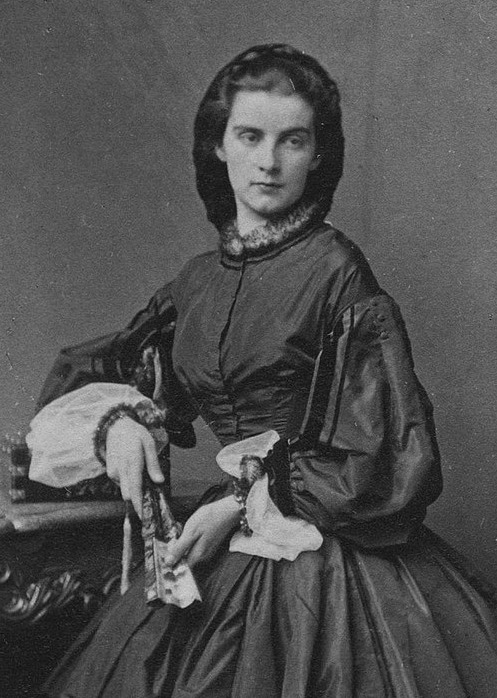
If you've been following me for some time you'll know that I'm always looking for scraps of information about Queen Marie Sophie of the Two Sicilies. Today I'll bring you a post that I've been writing for while, about one of Marie's friends and biggest admirers.
After the end of the Siege Gaeta in February 1861, and until 1870, the deposed Bourbons of the Two Sicilies lived in Rome, where they formed a court in exile. There, Queen Marie started to frequent the circles of artists, and she, who was renowned as a living heroine, became a muse for them. During the decaded of 1860s she possed for many artists in Rome, like Thomas Buchanan Read, who painted her in 1868. But perhaps the greatest piece of art for which she modeled was a real-size sculpture made by the famous sculptress Harriet Hosmer.
Perhaps those from the US, or those who are into art and sculpture history are familiar with her. I'm neither. So I started to investigate: who was Harriet Hosmer and how did she became acquianted with Marie?
Harriet "Hatty" Hosmer was born in Massachusetts on October 9, 1830. When she was nineteen-years-old she decided that she wanted to become a sculptor. There was only one problem: sculpture was considered to be a male-only proffesion. But Harriet was determined, so her father supported her, and despite women not being allowed to study anatomy, he managed to get her a spot at Missouri Medical College through the influence of Wayman Crow, a friend of the family. In November 1852 Harriet went to Rome, to finish her training as an sculptor, where she frequented the likes of Nathaniel Hawthrone and Elizabeth Barret Browning, amongst many other American artists and writers that lived there. By the 1860s she became in the leading female sculptor of her time, opening her own studio. And in 1868, Harriet begun the only sculpture of a living subject she ever did, an sculpture that once it was finished would be called her masterpiece. That is, an sculpture of Queen Marie.
Harriet informed Wayman Crow about her latest work in a letter dated January 4, 1869:
I am making a statue of the Queen of Naples. I don't know that you ever saw that photograph of her with a cloak wrapped about her, called the Gaeta costume? She came to me the other day dressed exactly as she was then, spur and all. It will make an interesting statue, for the subject is invested with so much that is historic. I forgot to say there is a pile of cannon balls at her feet, and upon them I shall get her to write her name and Gaeta and the year. The costume is perfectly classic, and she is so beautiful and artistic looking that she lends herself wonderfully to art.
Marie possed for Harriet many times, and soon the two became close. Harriet was pretty much head over heels for the Heroine of Gaeta, whom she describes in her letters as "uncommonly handsome" and delightful. Harriet's biographer Dolly Sherwood says this about the sculptor's enthusiasm for the exiled Queen:
In their love of equestrian sports, they had much in common. But beyond that, Maria Sophia represented a flesh-and-blood heroine, for she had stood beside her husband on the battlements at Gaeta during the final siege that brought down the kingdom. Wrapped in a voluminous cape, she became the symbol of resistance, urging on the defenders ot Gaeta in their last battle to sustain the kingdom of Naples and the Two Sicilies against republican forces fighting for a united Italy,
It was coincidental that Maria Sophia came to Rome as an exile in 1861 when Harriet Hosmer was exhibiting her statue ot Zenobia, the vanquished queen of antiquity. In spite of all that Hosmer could do to resuscitate her, Zenobia was far removed from contemporary struggles. But when Maria Sophia came to her studio, years later, dressed just as she was at Gaeta, in cape and spurs, here was an actual, modern-day heroine, beautiful and courageous, a tragic figure irretrievably stripped of power. Small wonder that Hatty was enchanted with her subject.
Harriet also met Empress Elisabeth, who went to Rome at the end of 1869 to accompany her sister in her confinement. I decided to left what I learned about Harriet and Elisabeth's acquaintance for a another post, since this one is already too long, however I'll leave as a teaser this small fragment of a letter that she wrote to Wayman Crown on March 17, 1870:
(...) This is a commission I am going to ask you to execute for me in the best style of Art, as it is for the Empress and the Queen (Austria and Naples understood.) They want half-a-dozen SHAKER HATS!!!!! That in large letters, for I am sure it will make you laugh. Those royal ladies are going to appear this summer in that style of head-dress, and I have no doubt that Shaker hats will afterwards be in great demand throughout Austria and Bavaria.
The letter goes on for almost two pages detailing exactly how this SHAKER HATS are, but I think this is enough.
In Dolly Sherwood's biography I also found this bit, which I'd never heard of before, about Marie asking Harriet to help her find a black maid:
As minion answering the royal bidding, she once wrote James Yeatman, champion of freed black people, to ask it he could locate a young girl to work as a maid for Maria Sophia. She told Crow that Yeatman had "fished me out a little darkey from the depths of the Black Sea and sent me a very pretty photo of her which I have forwarded to the Queen and now we will see if she is pretty enough."
Sadly I have nothing more on this since it's never mentioned again. The only thing that I can add is that Marie grew up in a household that had black servants, so she possibly wouldn't have found strange to employ a black girl.
By the beginning of 1870 the air in Rome was changing. In July, the Franco-Prussian War begun, and only weeks later Napoleon III recalled the French soldiers that were protecting the Papal States, leaving them defenseless. Many of the foreigners that were staying at Rome left, but Harriet stayed, for she didn't want to miss what she knew was a historical moment. So she saw first hand when the Italian troops finally broke into the city on September. By October, the Papal States were annexed to the Kingdom of Italy, and the Unification was completed.
Harriet wrote on December 30, 1870, that:
The Prince and Princess of Piedmont [the futures King Umberto I of Italy and Queen Margherita] came the other day, and society (Roman) is completely divided as to who shall speak to them and who shall not. Papalini or Liberali you must be. You can't be both. He was at the hunt today, and is no beauty. She, they say, is pretty and altogether charming. I haven't seen her, not even a glimpse, though one of her gentlemen of honor informs me I am to have a visit from her. But I am faithful to my violet-eyed heroine of Gaeta.
(Absolutely love Harriet describing Marie's eyes as violet as if she was the protagonist of a self-incert Wattpad fic).
On their part, Marie and her husband King Francesco II had long left the city. After the death of their daughter Cristina at only three-months-old on March 28, 1870, the sovereigns saw no more reason to stay in Rome. Marie left first April 16, and Francesco followed her April 21. They would never comeback.
The royal couple moved to Bavaria, where Harriet visit them in December 1871. From this visit comes this letter:
I wrote you from Paris, on my way to Munich, where I had a delightful week with the Queen of Naples. They live at the Castle of Garatshausen, two or three hours from Munich, a charming place on the Lake of Starnburg. I never saw her so handsome. It is quite a delight to look at her, and she was so pleased to see me, I don't know when I have had a warmer welcome. The King, too, received me with open arms, but beat me at chess every night in the most merciless manner. I went for three days and stayed seven. The Queen made me ride all her horses, and drove me about herself in the mornings in her carriage with the most faultless pair of little ponies, round as apples. The country is beautiful about the lake. In the afternoons a ride, and such scampers over the fields! I had never a scrap of riding gear with me, but I was arrayed in her own royal togs, and good riding made up the rest. In the evening always chess with the King, and having forgotten almost all I ever knew about the game, you may imagine I cut but a sorry figure. Now and then in a sort of wild and desperate way I used to make a hit which made his Majesty stare, but it made me stare much more, I promise you. When I came away there were three of us sorry, and I promised to repeat my visit next summer.
Harriet would later said that "The romance of my life was centred in Garatshausen and the Queen of Naples. My intimate friendship with this lovely woman was an episode to be remembered." She remained in contact with the Queen and King for the next years, and we also find a mention of the sculptor visiting the couple in 1876, this time in England, where she took them to visit Warwick Castle and two days later to Castle Ashby. Lady Warwick later wrote to Harriet about the "charming" visit of their Majesties, and added that they were all "greatly impressed with the Queen's beauty".
So it's at this point in which will adress what you've probably been thinking this whole time:

If you got this vibe, you are correct. Harriet Hosmer was romantically involved with several women throughout her life. Was Marie one of them? Harriet definitely seems quite enamoured with her, but so was half of Europe during the 1860s. And we have nothing on how Marie felt about Harriet. So for lack of more evidence, the nature of this relationship is to remain ambiguous to us (at least for now).
However, while I was researching this subject I discovered that in many works about Harriet it's a given that she and Marie were lovers. But other than the "romance of my life" quote, they don't provide much more evidence. Perhaps there are more of Harriet's letters about Marie that are (even) more suggestive and make for a stronger case than these that were published in 1912 (!), but I don't know.
Lastly, what happened to the statue, the so-called masterpiece? Until 1872 it was in Harriet's studio; apparently it's speculated that Marie took the statue with her to Bavaria, but its last know location was in Castle Ashby, in 1891. As I mentioned before, Harriet took the royal couple to Castle Ashby in 1876, so there is a connection between the Queen and that place. Did she gifted or sold the statue to the Marquess of Northampton, the owner Castle Ashby? We don't know. Sadly, the statue is now lost, and not even a photography of it survives. But who knows, maybe it's still out there in someone's basement, and it will soon be rediscovered. We can only hope.
Sources:
Carr, Cornelia (1912). Harriet Hosmer: letters and memories
Cronin, Patricia (2009). Harriet Hosmer: Lost and Found, A Catalogue Raisonné
Sherwood, Dolly (1991). Harriet Hosmer, American Sculptor, 1830-1908
#queen marie sophie of the two sicilies#harriet hosmer#empress elisabeth of austria#historicwomendaily
36 notes
·
View notes
Text
The Winterhalter That Wasn't: The Real Authorship of a Portrait of Queen Marie Sophie of the Two Sicilies

Oh, Franz Xaver Winterhalter: THE painter of royals. Born in 1805, the German painter made a career by painting detailed, gorgeous, romantic and flattering-yet-still-accurate portraits through out the courts of Europe. Amongst his royal sitters were Queen Victoria, Empress Eugénie of the French, Empress Maria Alexandrovna of Russia, Queen Isabel II of Spain, Empress Elisabeth of Austria, and many more. Everybody wanted to be painted by Winterhalter, and the painter was in high demand until the end of his life in 1873.
Winterhalter is my favorite portraitist. The sheer amount of detail that he put into the fabrics of the dresses is impressive, as it is the way he enhanced his female sitters and romanticized them while still making them recognizible (non of his male portraits are that impressive, sorry guys).

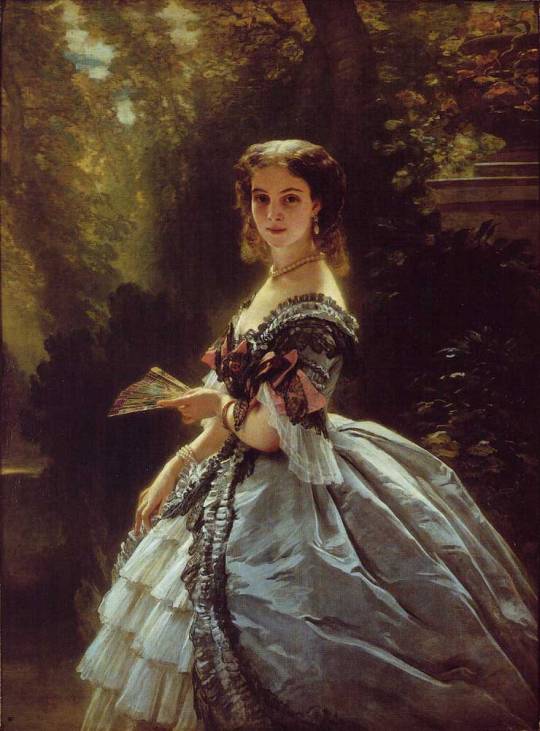

Queen Marie Henriette of the Belgians (1865) // Princess Elizaveta Esperovna Troubetzkaya (1859) // Empress Eugénie surrended by her ladies in waiting (1855). All by Franz Xaver Winterhalter.
So remember how Winterhalter painted Empress Elisabeth of Austria? Well, he also painted her younger sister Marie, the last Queen of the Two Sicilies. Possibly. Maybe. Allegedly. I actually haven't found any evidence of this, but I did read people talking about it on royal discussion forums, and the people there absolutely knows what they are talking about. So it is possible.
Now enters the portrait that compels this post: the alleged portrait of the Queen of the Two Sicilies by Franz Xaver Winterhalter.

Queen Maria Sophia of Naples, attributed to Franz Xaver Winterhalter
So what do we know of this portrait? Not much that I could find. It is listed in Wikimedia Commons as belonging to the Minneapolis Institute of Art, and that it was a "Bequest of the Estate of Miss Marguerite Davis", whom apparently was like a super rich lady from the mid 1900. And as I said before, it has been attributed to Winterhalter.
If you google it you will find it as such in plenty websites and social media posts. But not gonna lie, I always thought that this identification was fishy. Look at the portraits I shared above and then look at this portrait. Does it really look like it was painted by the same guy? The guy known for his detailed idealized portraits? Like were are the textures of the fabrics? The more I looked at the portrait the less it looked like a Winterhalter.
Yesterday I was looking for information for a new post about Marie that I'm writing (also relating an artist) when I came across an article by Anne Brewster called "American Artists in Rome", published in the February 1869 edition of Lippincott's Magazine of Literature, Science and Education. The article, written from Piazza di Spagna in December 1868, had a mention of Marie so of course I had to read it. In it Brewster paints a picture of Rome and its residents from the United States. It was the beginning of the season and artists were filling up the studios; she visited two of them, an sculptor's and a painter's. First the studio of Mr. Mozier, in which she found many of his works such as "Undine" and "Lady of Avenel". Then she moves onto Mr. Buchanan Reid's studio, "at present one of the most attractive in Rome." The main attraction of it, Brewster tells us, is his new portrait of the ex-queen.
You cannot imagine the way my heartbeat raised as she described the portrait and I realized that I freaking knew what she was talking about:
But the principal object of interest just now at Mr. Read’s studio is his unfinished portrait of Maria Sofia, ex-Queen of Naples. Mr. Read has been closely engaged for two weeks at the Farnese Palace, where this beautiful young throneless queen has been sitting to our famous poet-painter, and his subject has inspired him to create a lyric in his picture.
Enough of the portrait is finished to enable us to read the poetic thought. In the background is Vesuvius and a sunset. The sky is beginning to be dotted with stars. The head of the Bavarian Bourbon queen wears no diadem but her own superb hair, which lies in a high mass of ruddy chestnut hue, and in the sky just above this true regal crown of beautiful womanhood is the evening Star.
The ex-queen’s face has tragic points in it, and in some photographs she looks as if she might be a bandit’s wife as well as a Bourbon princess; but Mr. Read has caught these striking features and rather fierce expressions, and with the transmuting power of a poet and artist blended them into deep feeling and thrilling emotion. Her hand is playing with the pearl necklace that encircles her throat, while from the fingers the pendant cross has slipped and rests against the light, filmy drapery of the breast.
The fire in the flashing eyes of the queen is softened down almost into tenderness, and there beams from them a look of something like faith and trust in the future—a watching for the rising of the morning planet.
While looking at the picture we feel so impressed by its expectant expression that we cannot help recalling how many marvelous changes crowned heads have had in our memory, and imagination willingly restores this young Bavarian girl to the throne that slipped away from her just as she stepped upon it as a bride.
I actually yelled "I KNEW IT" when I read this. Here I had my confirmation: that portrait was NOT a Winterhalter. Since the portrait as we know it today looks exactly as it is described by Brewster it seems that Mr. Read never finished it. But who was Mr. Read?
Thomas Buchanan Read was a poet and painter born in Chester, a county of Pennsylvania in 1822. When he was 10 years old he was apprenticed to a tailor, but he ran away to Philadelphia and got a job as a clerck on a grocery store, rolling cigars and painting business signs. After a bunch of comings and goings in which he discovered his abbility for art, at age 18 he met the wealthy Nicholas Longworth, who opened a studio for him. Thus began his career as a painter, which gained him praise. His career as a poet seems to have been much more prolific and praised, with several publications that span for over twenty years. He went to Europe for the first time in 1850, and then again in 1853 until 1858, where he dedicated to the study of art in Florence and Rome. During the American Civil War Read he was a major in the Union Army, but because his weak physical prevented him from joining the battle he put all his strenght in lifting up the morale and recruiting soldiers by giving public readings and reciting his war poems in the camps of the army. He spent his time between Philadelphia and Cincinnati, but during the final years of his life he lived mainly in Rome. In 1872, when he was sailing back to the United States with his family, he caught pneumonia, and by the time they reached New York City he was too weak to continue traveling. He died a week later on May 11 1872 aged 50 years old.
Here are some paintings by Buchanan Read:

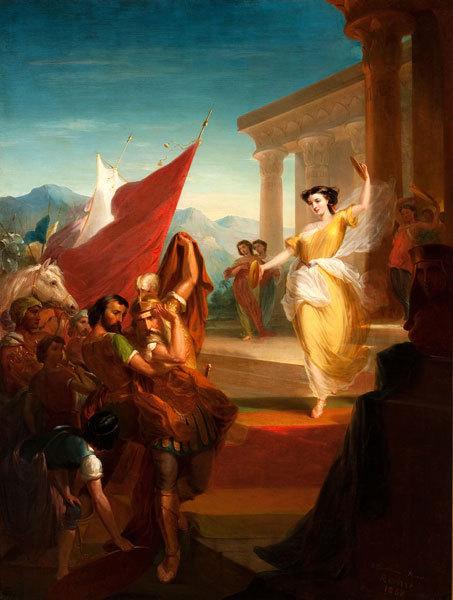

The Harp of Erin (1867) // Jepthah's Daughter (1858) // The Angel Appearing before the Shepherds (1870)
Look at the textures! Look at the colors! Comparing these portraits to Marie's I can say "yeah this was painted by the same guy". Also his thing absolutely was "lady in a translucid white dress", so maybe the portrait is just meant to look Like That.
Last night I was excited about my discovery, but now I'm a bit sad. Read's portrait of Marie is beautiful and memorable, and yet it has been misslabeled as a Winterhalter for years. He deserves the proper credit for his work. I will try to write to the Minneapolis Institute or Art later to see if they a) still have this portrait in their collection and b) if they will correct its authorship. If you see this portrait going around as a Winterhalter, try to correct it. It's time to give this painting back to his author.
Sources for Read's biography: [x] [x]
#this might be my greatest collaboration to the royal portraits enthusiast community#also one of the articles i cited at the end actually mentions that marie was one of read's sitters!#queen marie sophie of the two sicilies#artist: thomas buchanan read#artist: franz xaver winterhalter#thomas buchanan read#franz xaver winterhalter
46 notes
·
View notes
Note
Hello! Do you have any recommend books on Queen Marie Sophie or Sophie Charlotte? The only one I have currently is the one Marie Sophie's biography by John Van der Kiste. Thank you in advance!
Hello! Sadly I do not have any book recommendations for Marie, because they are all bad lol
Ok I'll be less harsh: they are all lacking. All of Marie's biographies (that I could check at least) have one gigantic problem: none use primary sources. Marie's life is scattered throughout Europe, so in order to write a good book about her you should consult sources from Bavaria, Naples, Rome, Paris, Vienna and England. Which no one has done yet. The Italian biographies do use sources from Naples, but that's it. So we have to keep waiting for a truly good book.
The first biography about Marie ever was published during her lifetime, in 1904: Maria Sophia, Queen of Naples by Norwegian historian Clara Tschudi. It isn't a good history book, it cites literally zero sources, so I only recommend it because to this day this book is quoted in modern biographies.
For her time in Naples The Last Bourbons of Naples (1825-1861) by Harold Acton is a good source. Marie isn't the main focus but she features a lot in the latter part.
Van der Kiste's book is basically a recompilation of all the information available about Marie in English. I have my problems with it but well, given how poor the material he was working with is, it isn't bad. It is better than Tschudi's for sure.
For Sophie THE book about her is Sophie Charlotte: Sisis leidenschaftliche Schwester by Christian Sepp. I haven't read it yet but I have absolute trust in that it is good. There are other biographies in French, but those are older and are outdated now. In English sadly there isn't anything focused on Sophie.
Hope that I could help you!
7 notes
·
View notes
Text
Some months ago I found this very interesting mention of Queen Marie in the memoirs Thomas St. John Gaffney, the United States consul general in Munich during World War I. I forgot to share it before so here it is:
An Afternoon with the Countess of Konigsmarck and Former Queen Maria Sophia, of Naples
Some time previous to my departure there had arrived in Munich from London the Countess of Konigsmarck, mother in-law of Baron von Bissing, the German Governor-General of Belgium (...) Having learned that I was about to visit Belgium she asked me if I would undertake a mission for a friend of hers who was a royal personage. I answered that I would be most happy to do anything that was consistent with my honor and the official position which I held. She replied that she would communicate with me later and arrange an appointment with the person in question.
The following day I received through the countess an invitation to tea to meet the former Queen Maria Sophia of Naples, who was then in Munich. I was naturally very much interested to see this venerable and exalted lady whose name had been so well known and honored in Europe on account of her heroism during the defense of Gaeta against the Garibaldians in 1861. The self-sacrifice of the beautiful young Queen during the horrors of that siege was one of the few glorious episodes in the history of the Neapolitan Bourbons. Her Majesty had now reached her seventy-fifth year, but was still sound in body and mind. Her figure was erect and neither her manner nor her movements showed her age or any traces of the harrowing vicissitudes which had occurred during the past half-century in her immediate circle. As I conversed with the Queen, I could not help recalling to my mind the many tragedies to members of her family during her own lifetime. Her nephew, Crown Prince Rudolph, heir to the Austrian throne, had met an early death under the most tragic circumstances. Her elder sister, the Empress of Austria, was the victim of an assassin; another sister, the Duchess d'Alencon, was burned to death in a charity bazaar in Paris. In 1886 her brother-in law, Count Ludwig von Trani, committed suicide in one of the Swiss lakes. These were but a few of the tragedies that the Queen had survived in addition to the loss of her throne. In 1894 her husband, King Francis, died in Arco in Tyrol.
After we had drunk tea, the Queen told me that she was anxious to send a message to her niece, the Queen of the Belgians, and she hoped that during my visit to that kingdom I would be able to forward the same with some assurance of its being delivered. Of course, her Majesty assured me that there was nothing political involved and that I need have no hesitation on that account. I thereupon mentioned to the Queen that I had recently read in an English paper an interview alleged to have been held with the Queen of the Belgians in which she was quoted as saying that an iron curtain had fallen between her and her Bavarian relatives which would never be uplifted.
The aged Queen replied to me with a pathetic smile: "I am sure that my niece has never used such language and that she has been deliberately misquoted. You know how the press, particularly in the present time, is using its power to make hatreds rather than encourage concord amongst men."
She then handed me the document for the Belgian Queen, and the Countess of Konigsmarck gave me a letter commending me to her son-in-law, Governor-General von Bissing. With hearty good wishes from these two venerable ladies for a pleasant and successful journey I took my departure.
As I walked back to my home my thoughts dwelt on this interview and the commission I had received and what exaggerated ideas people have of the power of royalties. The public has really no conception of the limited influence which members of the royal family outside the reigning sovereign have on the ministry or the military and civil authorities. This was evidenced by the Queen of Naples having recourse to an unimportant person like myself for this small favor rather than apply to her cousin, the King of Bavaria, or the Foreign Minister.
Gaffney, Thomas St. John (1930). Breaking the silence: England, Ireland, Wilson and the war
#i wish there was more info on marie and queen elisabeth's relationship#queen marie sophie of the two sicilies#queen elisabeth of the belgians#author: thomas st. john gaffney#breaking the silence: england ireland wilson and the war
5 notes
·
View notes
Text

One year after her grandson's tragic end, and two after the death of her husband, — January 24, 1890* — the Duchess Ludovica fell ill at her palace in Ludvigsstrasse, in Munich.
The Duchess had hardly ever visited her daughters. She had always declared she would live in the air in which her youth had been spent, and there also she would die. The doctors said at once that her condition was very serious, chiefly on account of her years. The hale old lady had nearly always gone through her illnesses sitting in her easy-chair. Although there was every sign that she would not recover from her serious indisposition — influenza and inflammation of the lungs — she could not be persuaded to go to bed. Sophie d'Alençon had been staying with her for some time before she became ill; and her three sons were also in Munich. The absent daughters were informed by telegram of their mother's illness. On the afternoon of January 25, her condition grew worse; and at seven in the evening she received Extreme Unction, from the hands of her domestic chaplain. Nevertheless she would not go to bed, but remained sitting on her couch, where later in the night she sank into a doze. At three in the morning she awoke to slight consciousness, and shortly afterwards the last struggle began. At ten minutes past four death came quietly, and took her from her dear ones.
The Duchess Ludovica was eighty-three and a half years old. A great number of her children, grandchildren, and great-grandchildren were gathered round her in the hour of death. All knelt around her couch ; her son Charles Theodore closed her eyes.
With her died the last member of the Bavarian dynasty whose memory went back to the beginning of the nineteenth century, and to the time of Napoleon the Great.
Tschudi, Clara (1905). Maria Sophia, Queen of Naples: A Continuation of “The Empress Elizabeth” (translation by Ethel Harriet Hearn)
*Tschudi mistakes the dates: it had been almost three years since Crown Prince Rudolf's death (30 January 1889), and over three since Duke Max's (15 November 1888).
ON THIS DAY, IN 1892, DUCHESS LUDOVIKA IN BAVARIA, NÉE PRINCESS OF BAVARIA, DIED AGED 83 YEARS-OLD. She was the youngest surviving daughter of the first King of Bavaria, Maximilian I, and his second wife Caroline of Baden. In 1828 she married her first cousin once removed Duke Maximilian in Bavaria, a member of a cadet branch of the House of Wittelsbach. They had ten children, amongst them Empress Elisabeth "Sisi" of Austria and Queen Marie Sophie of the Two Sicilies.
#I did read somewhere else that at the moment of her dead only Sophie was with her#but well people these are the sources I'm working with#ludovika of bavaria duchess in bavaria#sophie in bavaria duchesse d'alençon#karl theodor duke in bavaria#artist: Franz von Lenbach#historian: clara tschudi#maria sophia queen of naples: a continuation of `the empress elizabeth´ (1905)#on this day in history#historicwomendaily
76 notes
·
View notes
Text


Maria Sophia's delight was indescribable when, after ten years of married life, on Christmas Eve, in Rome, 1869, a daughter was born to her. Four days afterwards the little Princess was baptized, Pius IX being her godfather, and the Empress Elizabeth her godmother. She received the name of [Maria] Christina Louise Pia, after her father's mother, her mother's mother, and the Holy Father, who himself performed the christening ceremony.
Tschudi, Clara (1905). Maria Sophia, Queen of Naples: A Continuation of “The Empress Elizabeth” (translation by Ethel Harriet Hearn)
ON THIS DAY, IN 1869, PRINCESS MARIA CRISTINA OF BOURBON-TWO SICILIES WAS BORN. She was the only child of Francesco II, the last King of the Two Sicilies, and his wife Queen Marie Sophie (neé Duchess in Bavaria). She would live for only three months, dying in March 28th of the next year.
#I almost forgot about her :(#princess maria cristina of bourbon-two sicilies#queen marie sophie of the two sicilies#francesco ii of the two sicilies#empress elisabeth of austria#on this day in history#house of wittelsbach#house of bourbon two sicilies#historian: clara tschudi#Maria Sophia Queen of Naples: A Continuation of ´The Empress Elizabeth´ (1905)#historicwomendaily
65 notes
·
View notes
Text

On Thursday, February 8, 1859, a glorious Italian spring morning, the Crown Princess approached her new country.
The roads leading to Bari were thronged with spectators who pushed and jostled one another in their effortys to welcome the young bride. Her name was on the lips of all; but no one spoke of her as the Princess of Bavaria or the Duchess of Calabria. With the familiarity which is characteristic of the people of southern Italy they used even before her arrival her Christian name only. They did not, however, call her Maria alone, for a number of her predecessors had borne that name. In Italy, to this day, she is always spoken of as "Maria Sophia".
Nobody as yet had seen her, but all talked about her with a familiarity and warmth such as they might have done had they known her very well. They praised her beauty, her winning manner, her stately bearing, and they spoke with admiration of her elegant dresses.
(...) Meanwhile there was bustle and excitement on board the Fulminante. The bride was standing in the middle of the deck in a costly travelling dress. She was this day perhaps more like her sister Elizabeth than ever. There were the same glorious, dark-blue eyes, the same abundant brown hair. She was not indeed as tall as the Empress of Austria, but her figure was as fine. The childishly innocent, at other times always bright expression, was to-day mingled with a touch of exprectant seriousness—a result partly of the fatigues of the journey, partly of the strong and unquiet feelings which naturally moved her at this moment. On the journey she had questioned Nina Rizzo and her new chamberlain about her future husband, as to his appearance and as to his behaviour towards his parents, his brothers and sisters, and his subordinates and she had not wearied of hearing stories of his childhood. On her naïve question as to wheter he was really as ugly as she had been told he was in Bavaria, both had done their utmost to reassure the youn Princcess. They had said that he was not ugly at all; and they told her of his kindness.
Tschudi, Clara (1905). Maria Sophia, Queen of Naples: A Continuation of “The Empress Elizabeth” (translation by Ethel Harriet Hearn)
#Francesco wasn't particularly good-looking but he still looked ok? I legit don't get why there's always so much emphasis in his looks#ludovika called him ugly once and now anytime he is mentioned in any work authors just have to comment on how unattractive he was#queen marie sophie of the two sicilies#francesco ii of the two sicilies#maria sophia queen of naples: a continuation of ´the empress elizabeth´ (1905)#historian: clara tschudi#historicwomendaily
46 notes
·
View notes
Text


Elizabeth was noted for her beauty. Helena was said to be in possesion of great intelligence. The younger daughters also were considered promising and pretty. Of Maria it was said that she was nearly as handsome as Elizabeth, and nearly as clever as Helena. She was warm-hearted and generous, incapable of saying an untrue word; but she was in the highest degree impulsive, caring nothing for the opinion of others, and the mother's upbringing modified but little this craving for independance. Like Elizabeth, she early showed a love of nature, and of horses and dogs, but unlike her sister she was not of an emotional disposition. She showed strenght and boldness where others were timid and weak. The back of a horse, the neighbouring woods, and the wild mountain summits, were the playground of this child, who developed splendidly, both in body and mind.
Clara Tschudi (1905). Maria Sophia, Queen of Naples: A Continuation of "The Empress Elizabeth" (translation by Ethel Harriet Hearn)
#it physically hurted me spelling Elisabeth's name with a Z#anyway I've been checking this biography that was published during Marie's lifetime#I think it's the first biography on her ever#it's one of those bio's that have you constantly going ´citation needed´ and ´source??´#because there just isn't any#BUT so far it seems pretty spot on#I really liked this description of Marie#queen marie sophie of the two sicilies#empress elisabeth of austria#helene in bavaria hereditary princess of thurn und taxis#house of wittelsbach#historian: Clara tschudi#Maria Sophia Queen of Naples: A Continuation of ´The Empress Elizabeth´ (1905)
23 notes
·
View notes
Text





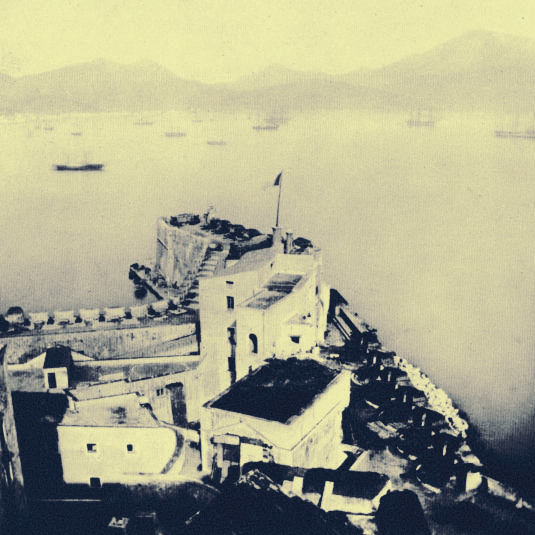


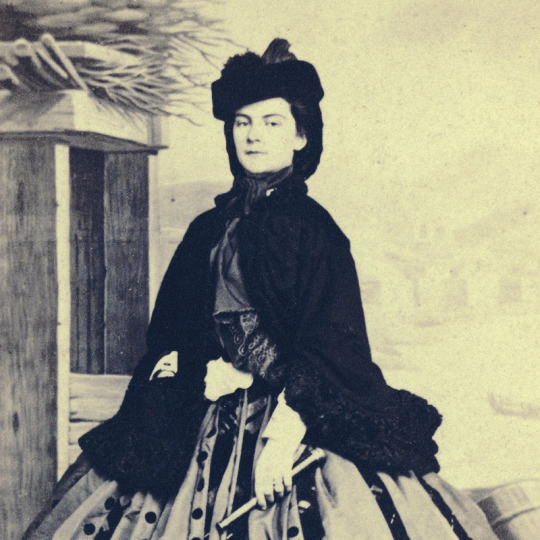
Book review: Maria Sophia, Queen of Naples: A Continuation of "The Empress Elizabeth" (1905) by Clara Tschudi, translated from the original Norwegian by Ethel Harriet Hearn
"Maria Sophia was a heroine for a day. But though she live for many years to come her picture in the annals of history will ever be resplendant with the brilliance of youth"
This biography, by Norwegian historian Clara Tschudi, was - as far as I'm aware at least - the first ever written about the last Queen of the Two Sicilies, Marie Sophie, or how she's know in Italy, Maria Sofia. Born a Duchess in Bavaria in 1841, she was a younger sister of the famous Empress Elisabeth "Sisi" of Austria, and in 1859 at the age of seventeen she was wed to Francesco, the heir of the throne of the Two Sicilies (composed by the kingdoms of Sicily and Naples). Only a few months after her arrival to Naples her father-in-law died and she became queen consort, but her husband's time in power would be short, for a movement had already started in the peninsula and it couldn't be stopped: the Unification of Italy. In 1860 Garibaldi and his troops entered to Naples and the royal family flew to the Fortress of Gaeta, where they resisted in a Siege for three months until they finally surrended. Queen Marie actively supported the resistance, visited daily the batteries exposing herself to the attacks of the enemy and took care of the wounded; this earned her the nickname that would accompany her for the rest of her life: "the heroine of Gaeta". After the fall of Gaeta the Two Sicilies were annexed to the newly formed Kingdom of Italy. Marie and Francesco lived in exile for the rest of their lives, never again setting foot in what once was their Kingdom.
Originally published in 1904 in Norway, an English translation by Ethel Harriet Hearn appeared in 1905. What's interesting about this book it's that it was written during Marie's lifetime: she would live another twenty years more after the release of this biography. I've been reading bits here and there these past months, but finally I had the time to sit down and read the whole book. I've been fascinated by the Heroine of Gaeta ever since I learned about her existence after falling down the Sisi rabbit hole, and I'm always looking for any piece of information that I can find about her, so for me reading the first of the three (!) biographies about Marie that are available in English was a must.
The book mostly focuses on Marie's time as Queen of Naples and the Siege of Gaeta, almost half of the chapters cover that period. This is understandable since Marie still being alive probably meant that a lot of information wasn't available for research in the first place, but this also means that over half of her life is missing from this pages. After the 1860s the book goes quickly into what the exiled couple did and then it just abruptly ends. Again, understandable, but it leaves you wanting for more. Still, the prose had a very good pacing and you can really read it in one go (I read over a hundred and twenty pages in a single afternoon). It does wastes around forty pages at the beginning talking about the revolution of 1848 and the abdication of King Ludwig I which has absolutely nothing to do with Marie in any way, so skip those chapters if you aren't interested, seriously you won't miss anything.
The main problem with this book it's the problem that most old history books have, that is, there isn't a single source cited. I don't know what is it about this victorian scholars that just expected you to blindly believe in what they wrote, but it's extremely frustrating. There are interesting facts and little anecdotes here but we just have no idea how Tschudi had access to this information: did she interviewed people that met Marie? did she had access to letters and other documents of the time? did she made stuff up? We simply can't know (although I choose to believe in that story about Marie falling asleep in a couch on the deck of the ship that took them to Gaeta and Francesco covering her with a blanket without waking her up).
Overall this is a nice, short reading for those interested in Marie, and it can also be an introduction for those who know little to nothing about her too. Tschudi's biography isn't perfect by any means and you should take with a grain of salt most of the information given, but it did paved the way for future scholarship on the queen (to this day this book is quoted in other works), so for that alone it's worth giving it a shot. And I also think that, although incomplete, the portrait that Tschudi paints of the heroic queen it's quite good.
Since the book it's already in the public domain you can read it for free here: https://archive.org/details/mariasophiaquee00heargoog/page/n7/mode/2up?q=%22the+heroine+of+gaeta%22
#the fact that Tschudi is still something of an authority in Marie's scholarship it's sad tho#we are still quoting the book that has zero citations because that's how lazy the scholarship on marie is#btw I only used a picture that I found on a sales website I don't physically own this book#book review#maria sophia queen of naples: a continuation of ´the empress elizabeth´ (1905)#historian: clara tschudi#queen marie sophie of the two sicilies#francesco ii of the two sicilies#house of wittelsbach#house of bourbon two sicilies
11 notes
·
View notes